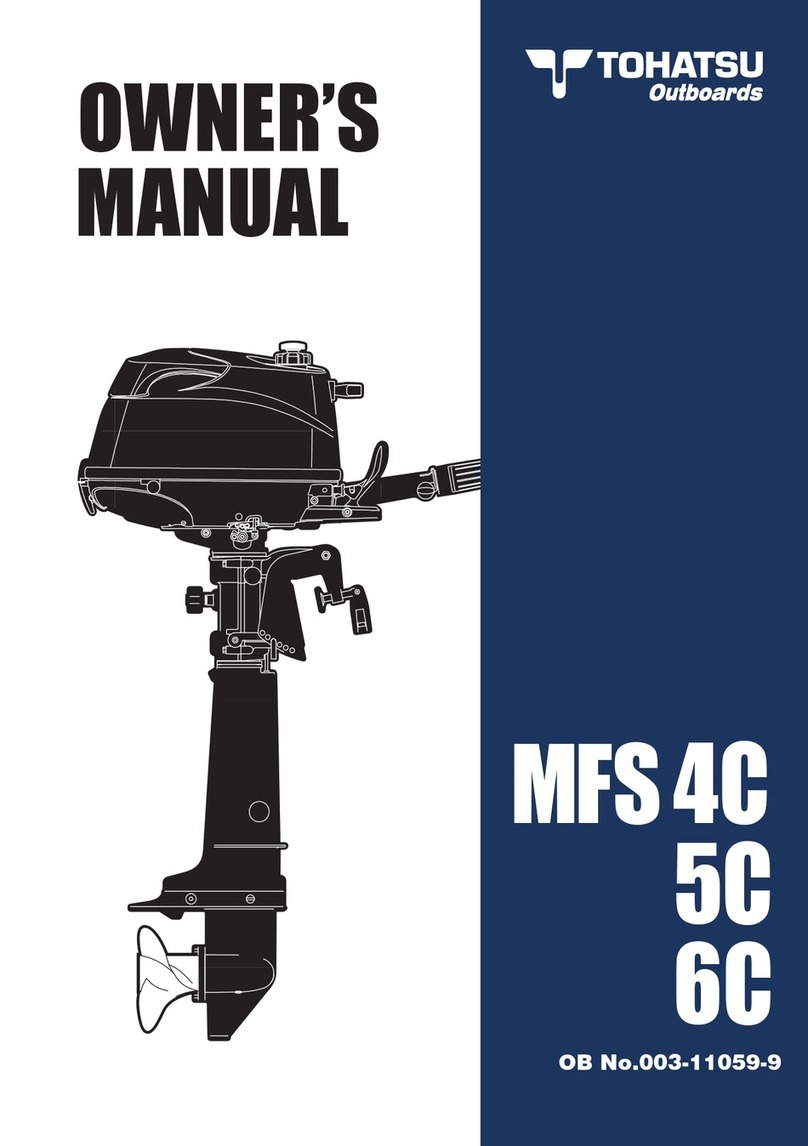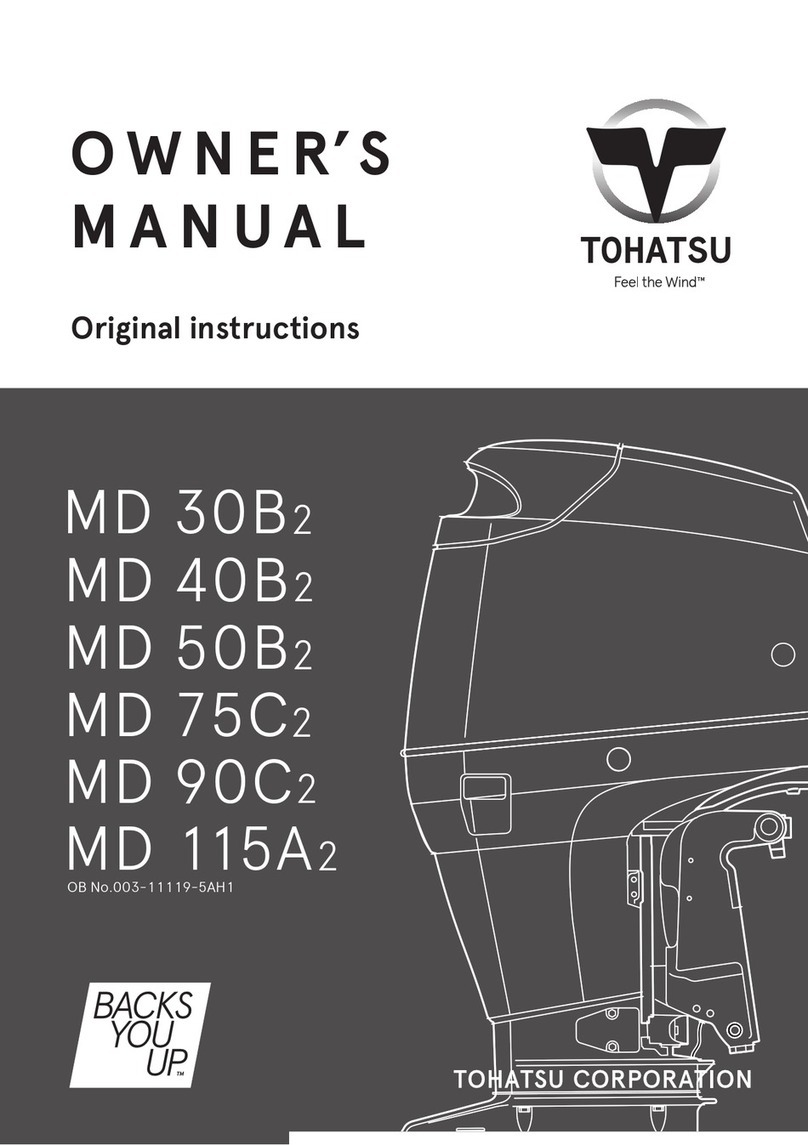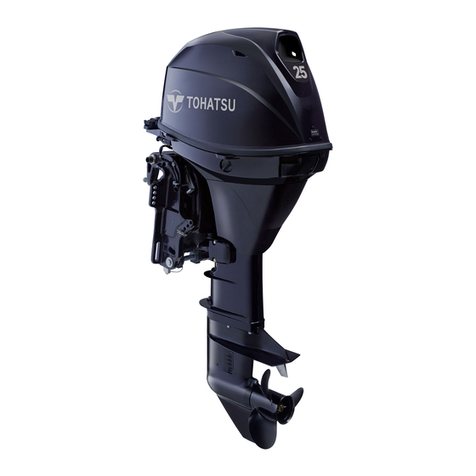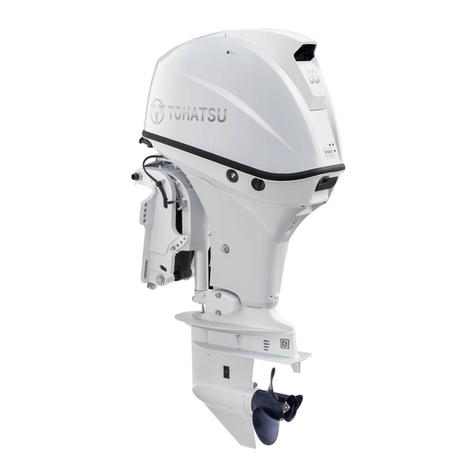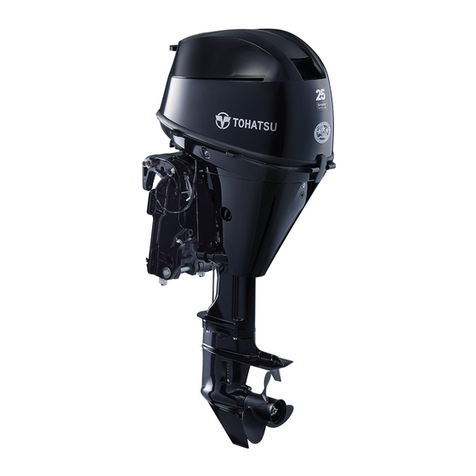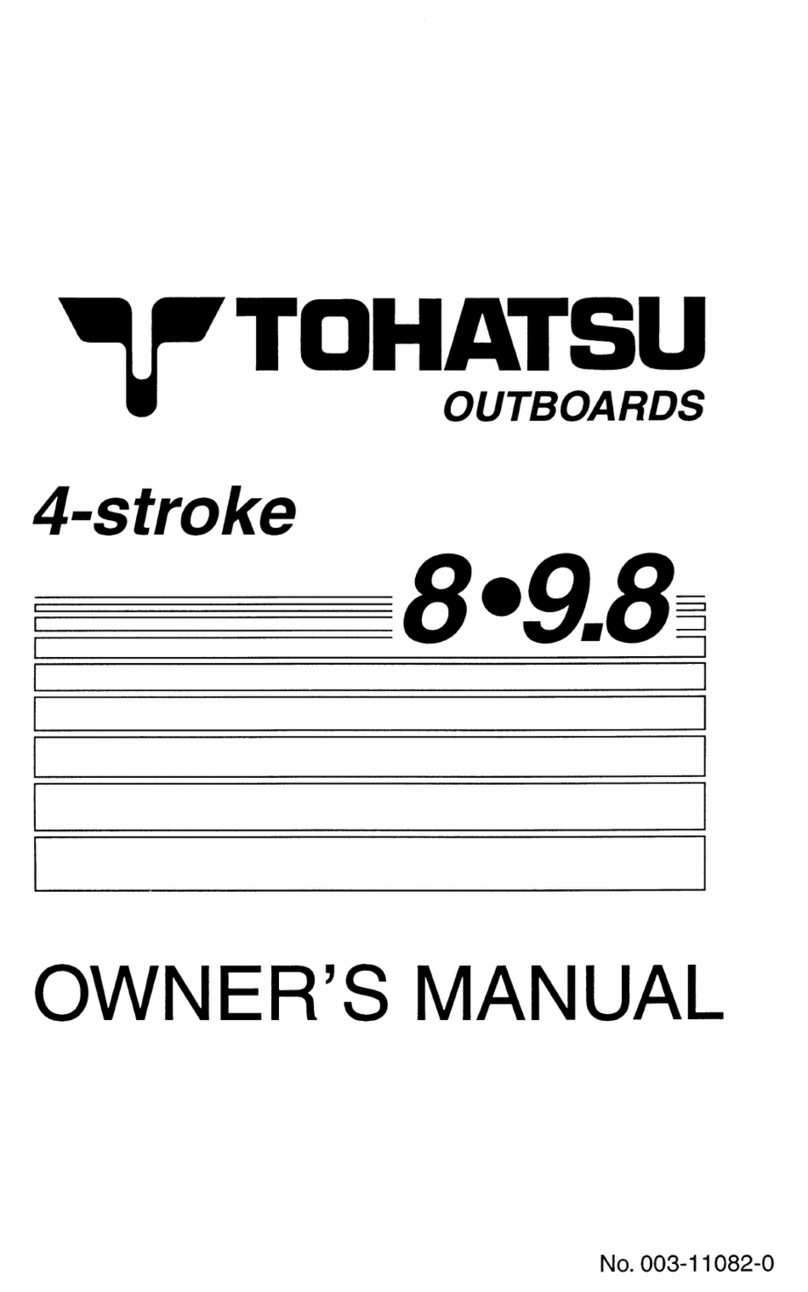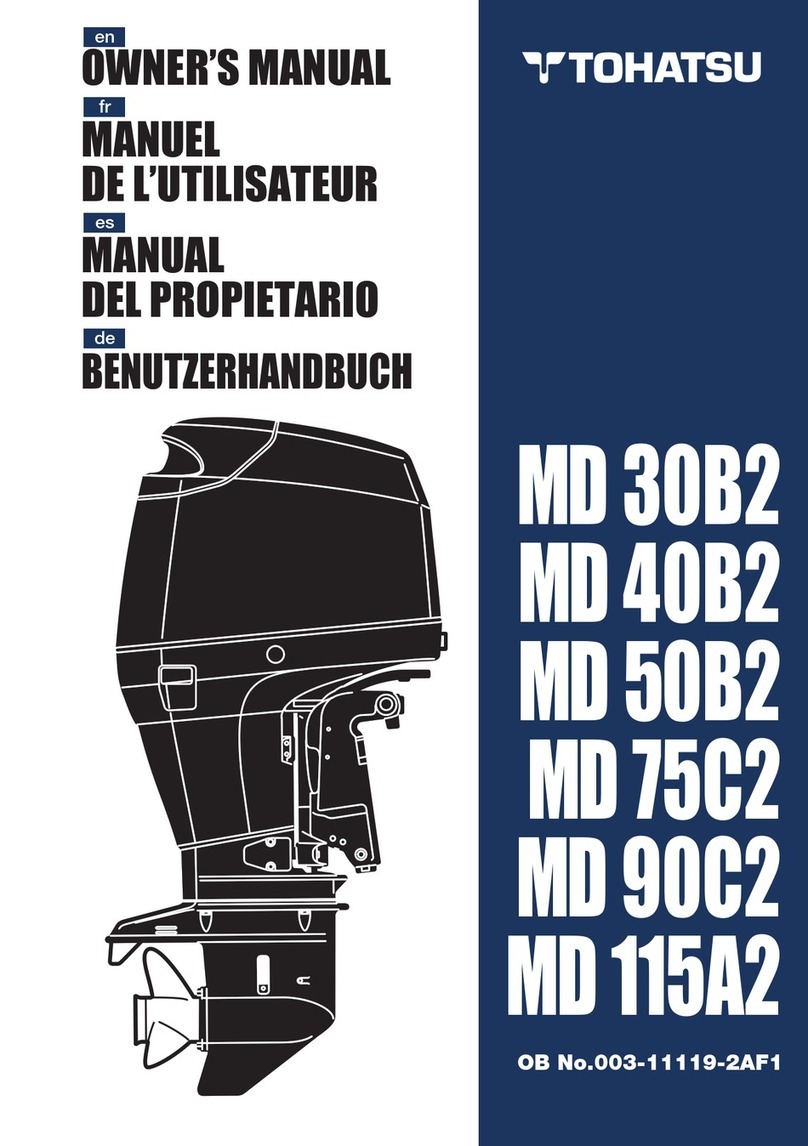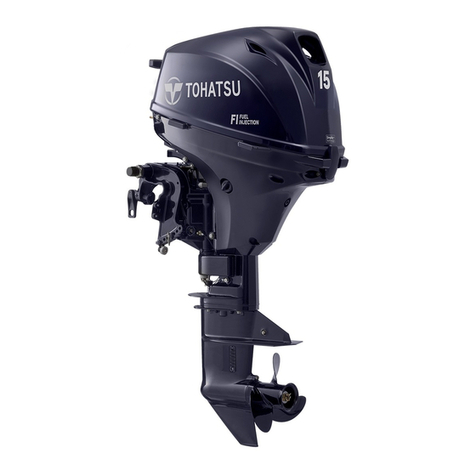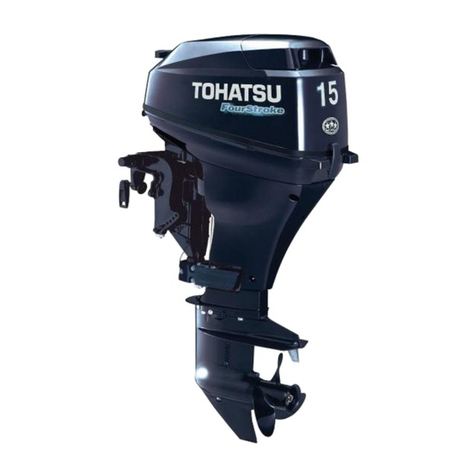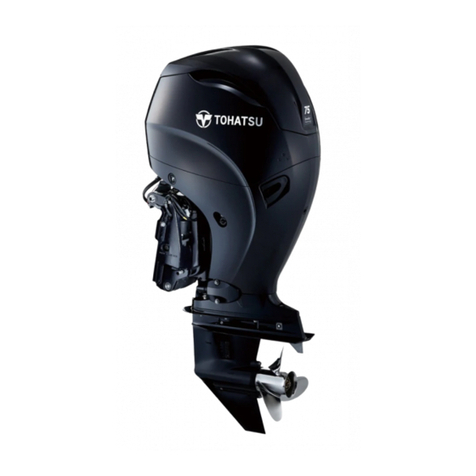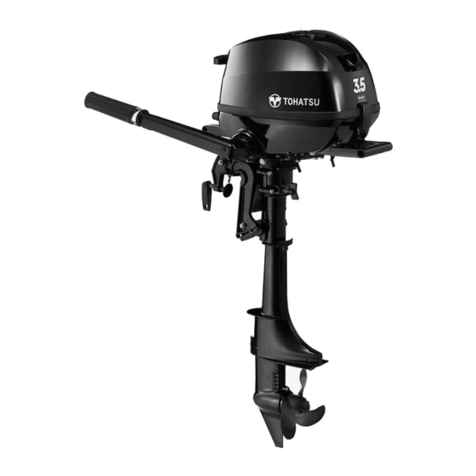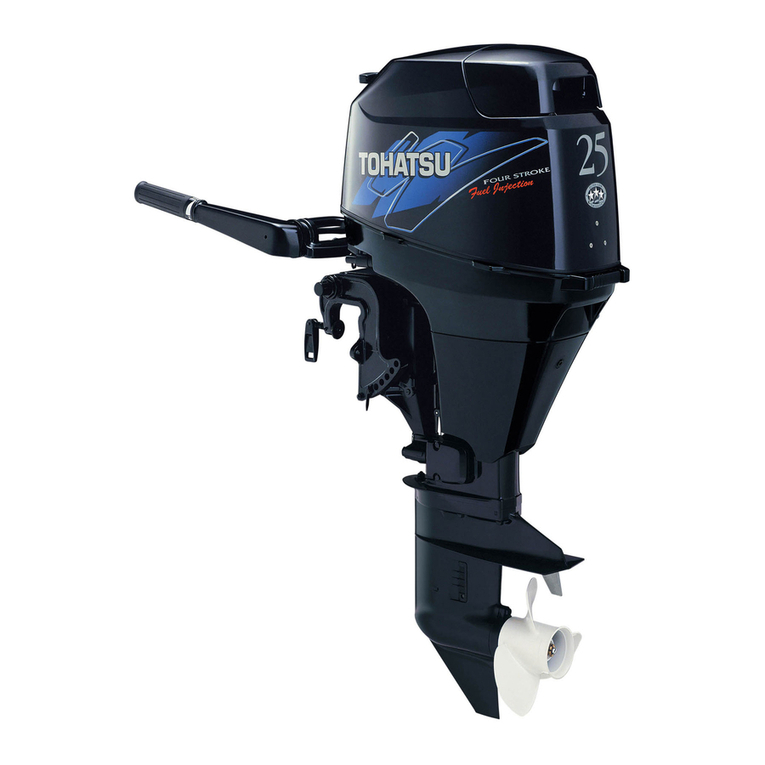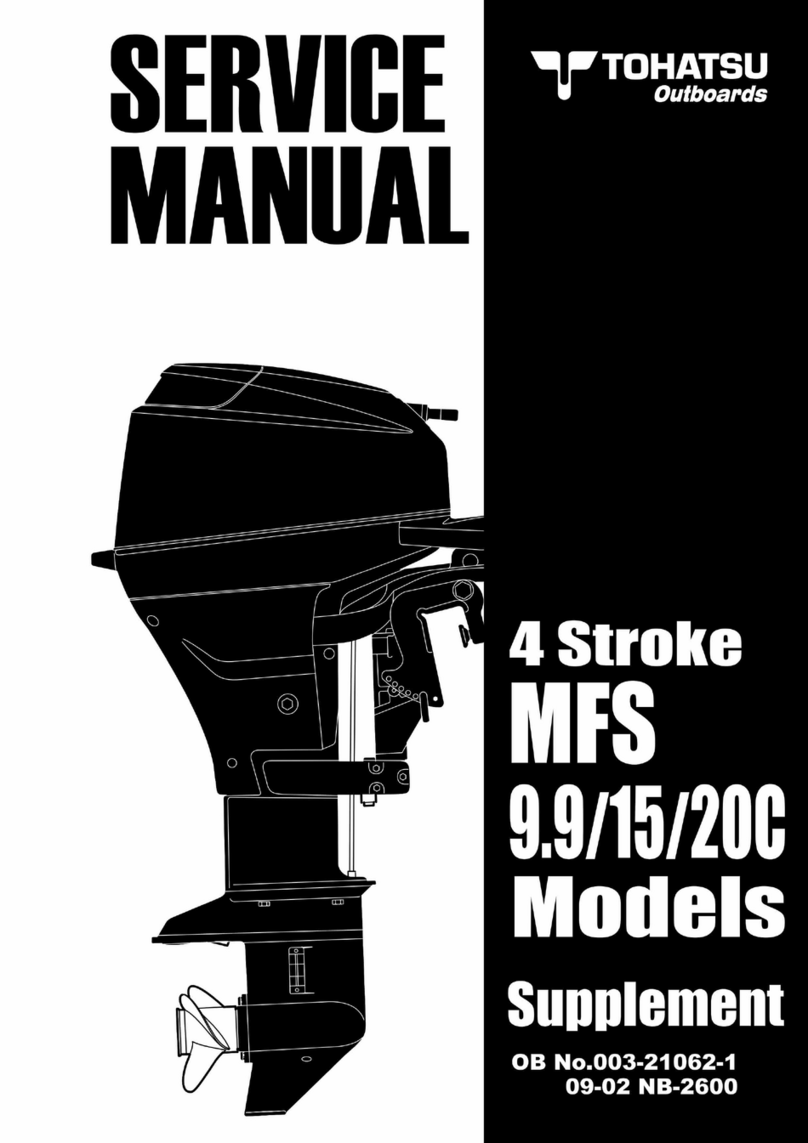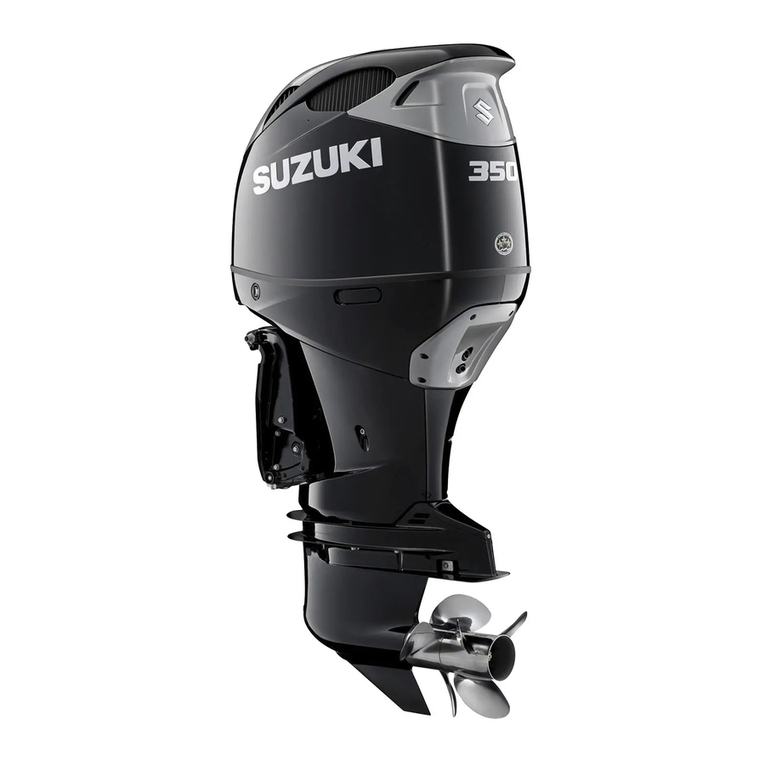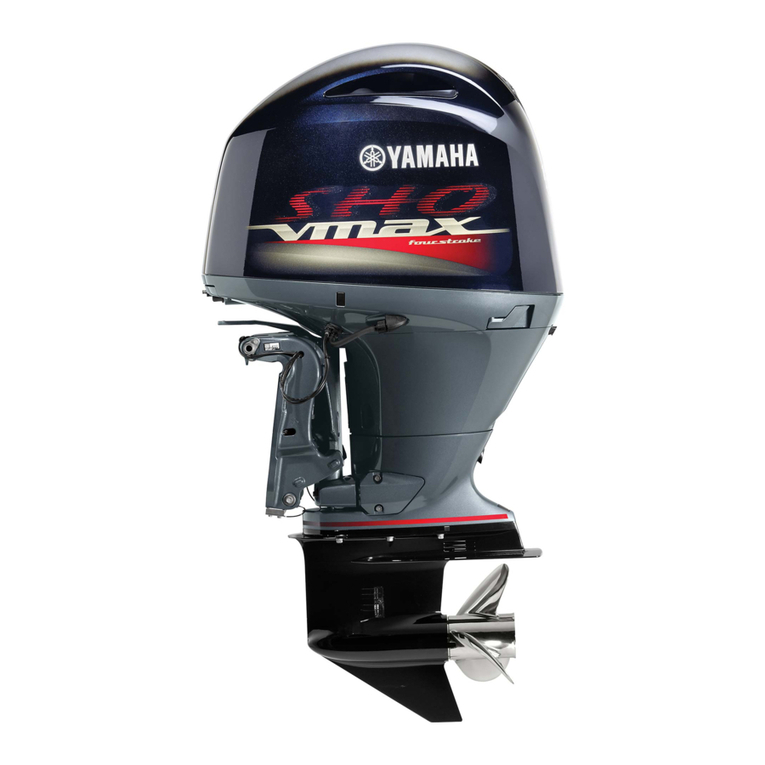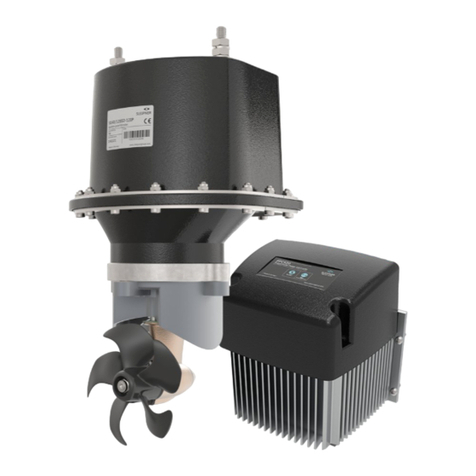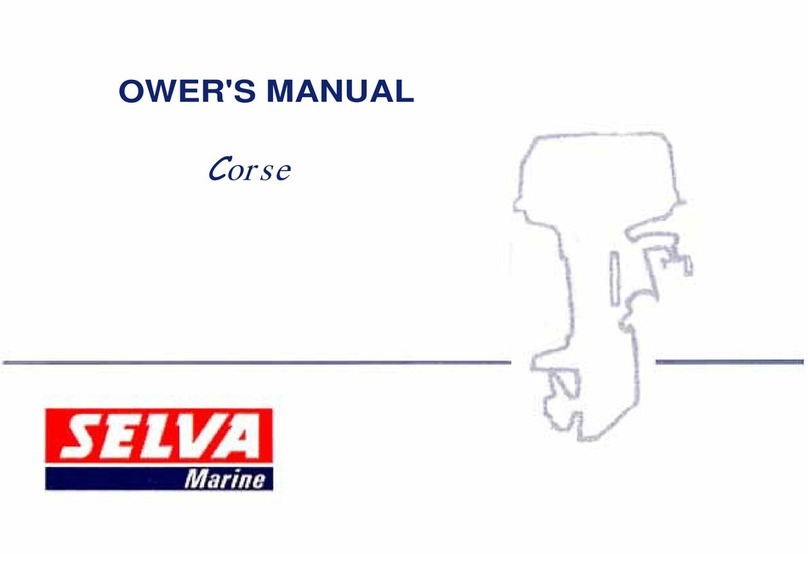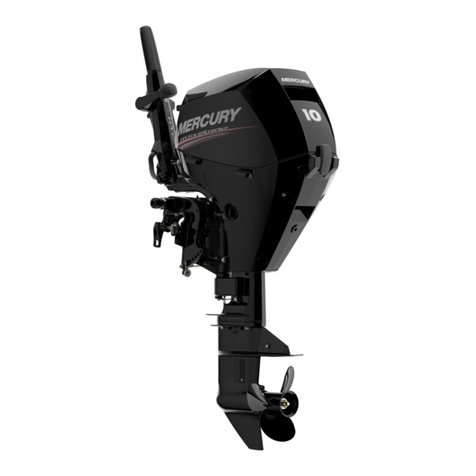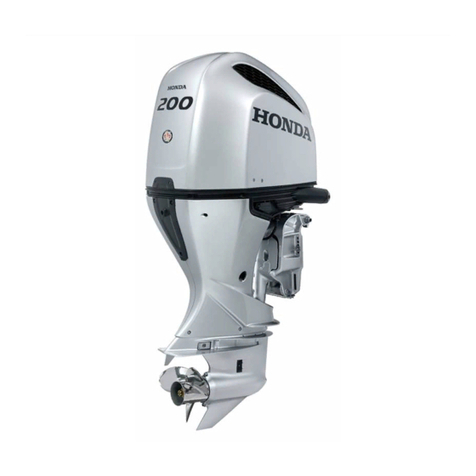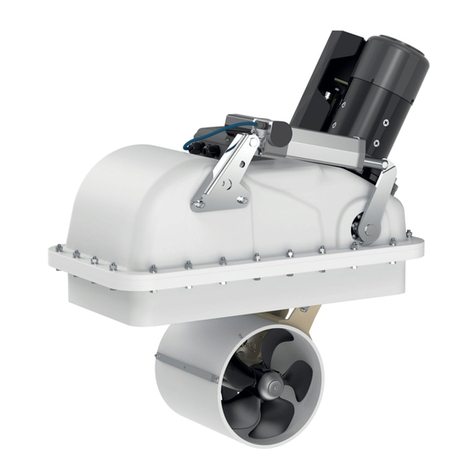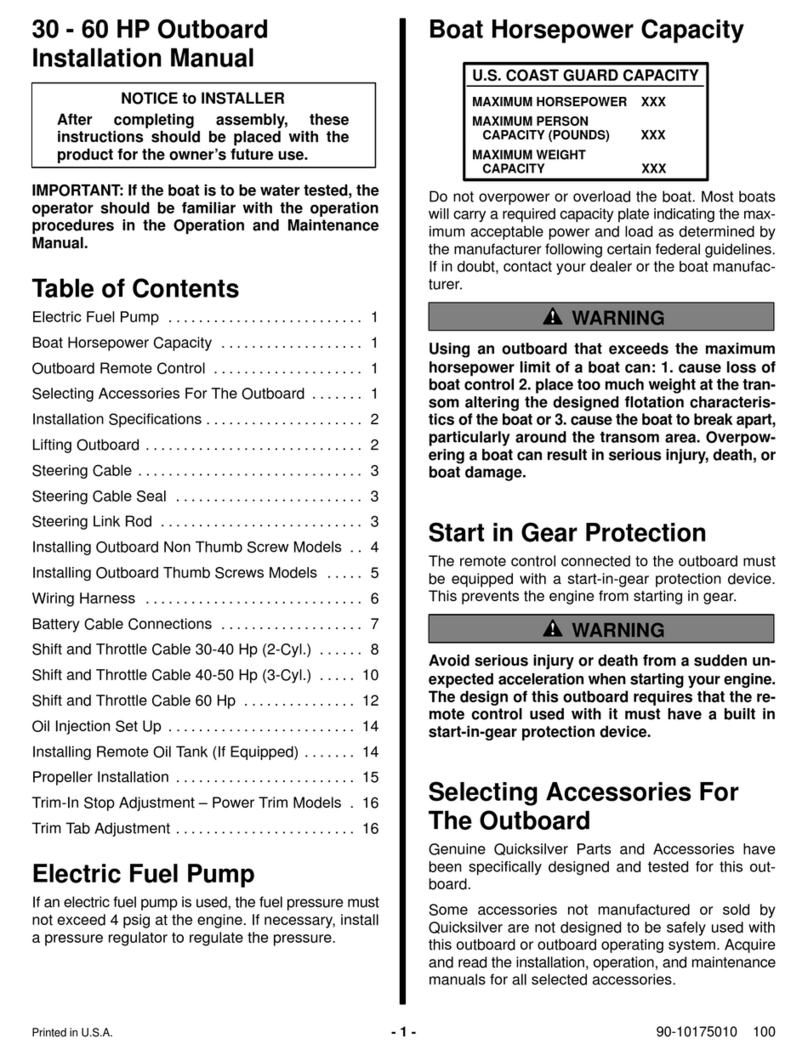
CONTENTS
1
2
3
4
5
6
7
8
9
GENERAL SAFETY INFORMATION 8
SPECIFICATIONS 10
NAMES OF PARTS 12
LOCATIONS OF WARNING LABELS 14
INSTALLATION 15
1. Mounting the outboard motor on boat 15
2. Installing the remote control devices 17
3. Installing the battery 18
PRE-OPERATING PREPARATIONS 20
1. Recommended gasoline types 20
2. Low permeation fuel hose requirement 21
EQUIPPED FOR UNITED STATES AND CANADA MODEL
3. EPA pressurized portable fuel tank requirements 22
EQUIPPED FOR UNITED STATES AND CANADA MODEL
4. EPA approval Primer valve/hose assembly 22
EQUIPPED FOR UNITED STATES AND CANADA MODEL
5. Recommended engine oil 23
6. Break-in 24
7. Engine oil warning lamp 25
8. ESG (A device preventing over revolution) 25
ENGINE OPERATION 26
Before starting 26
1. Filling the fuel 26
2. Feeding the fuel 28
3. Starting 29
4. Warming up the engine 34
5. Forward and reverse 35
6. Stopping 37
7. Trim angle 38
8. Tilt up, tilt down and shallow water operation 40
REMOVING AND CARRYING THE OUTBOARD MOTOR 44
1. Removing the outboard motor 44
2. Carrying the outboard motor 44
3. Storing the outboard motor 44
TRAILERING 45
ADJUSTMENT 46
1. Steering friction 46
2. Throttle grip 46
3. Remote Control Lever Load 46
4. Trim Tab Adjustment 47
OM_E_MFS15C-20C_body_111224.indd 3 11/12/13 12:40

